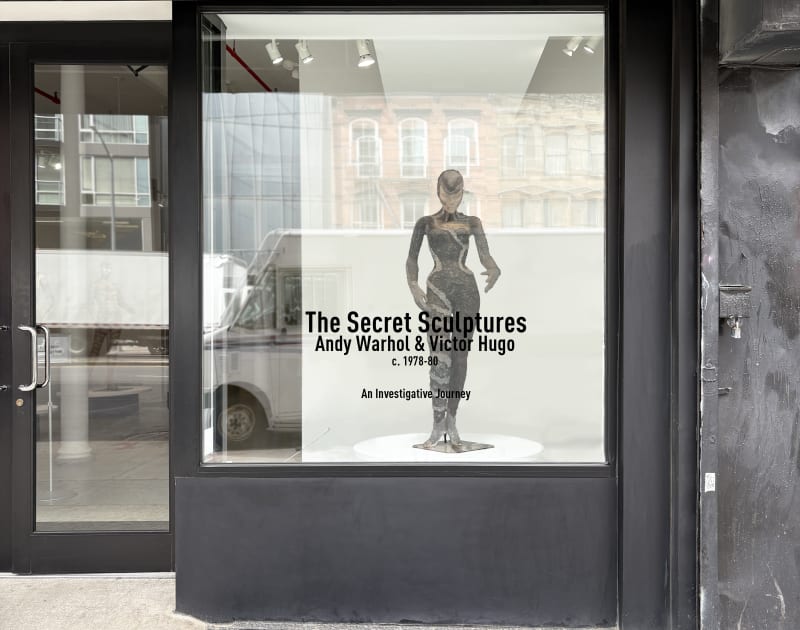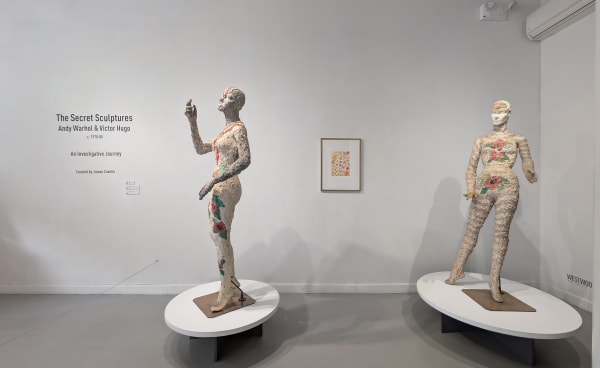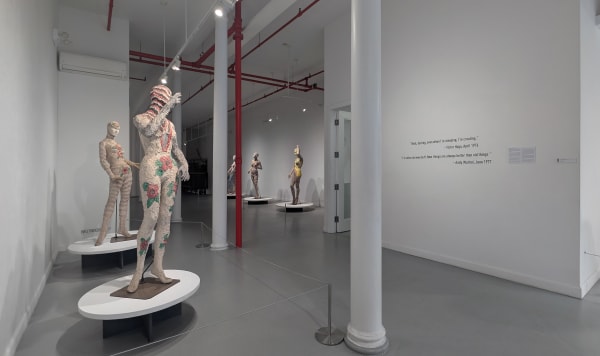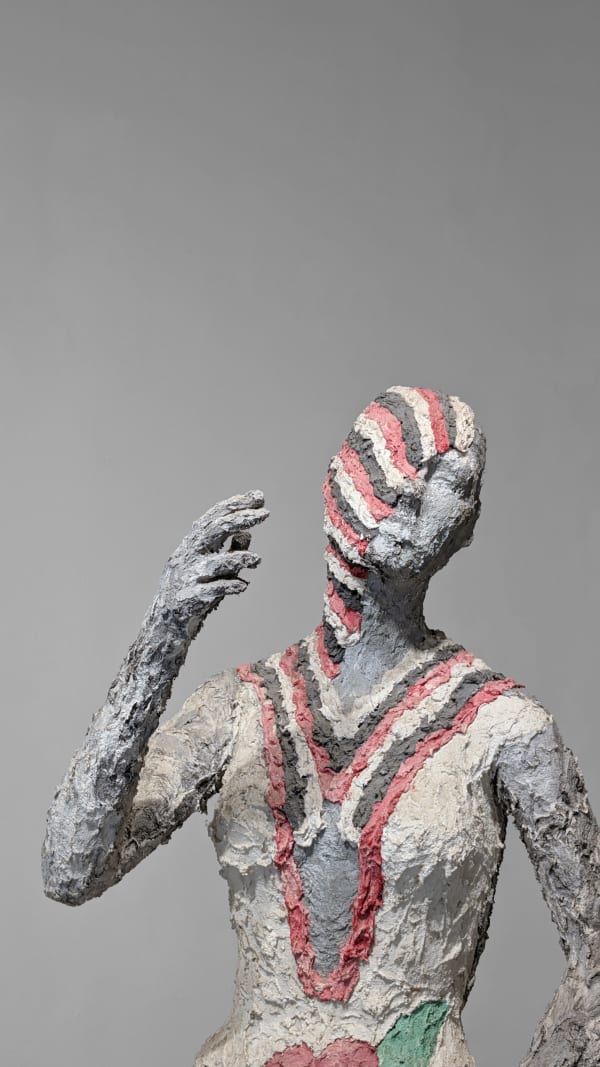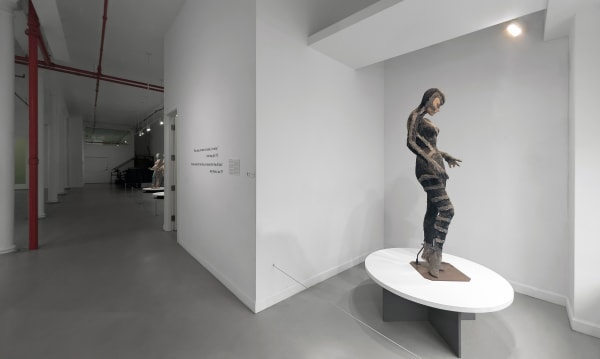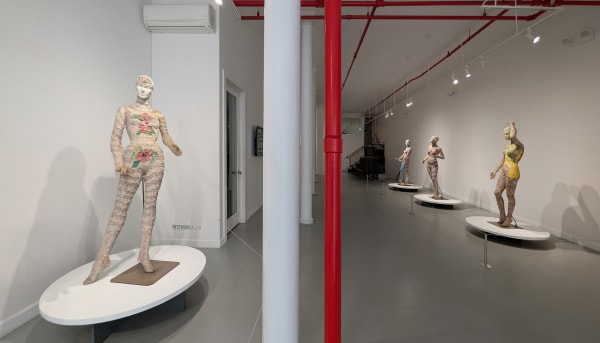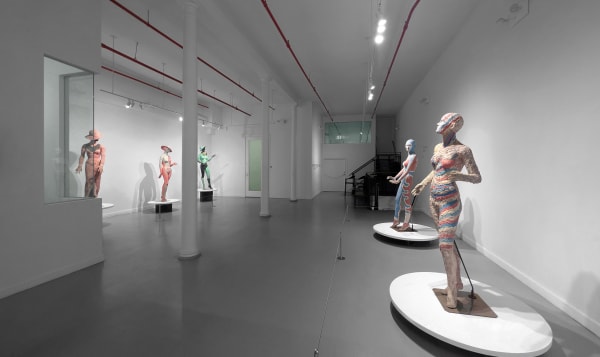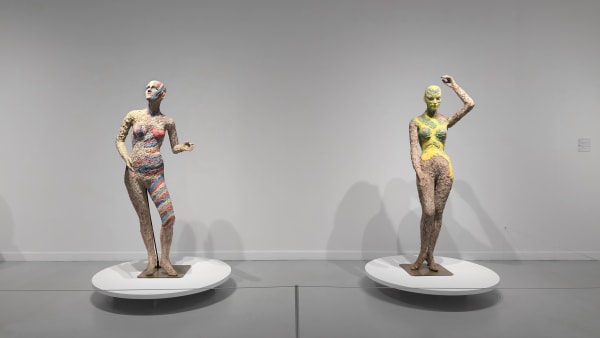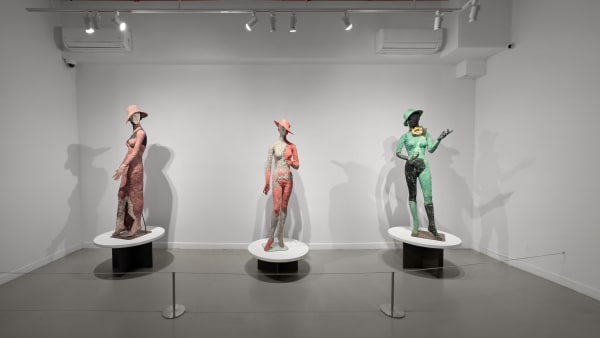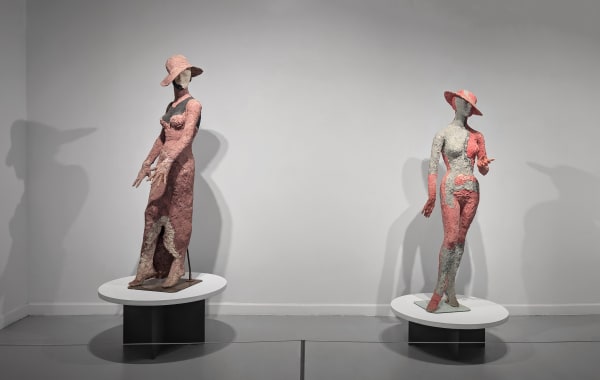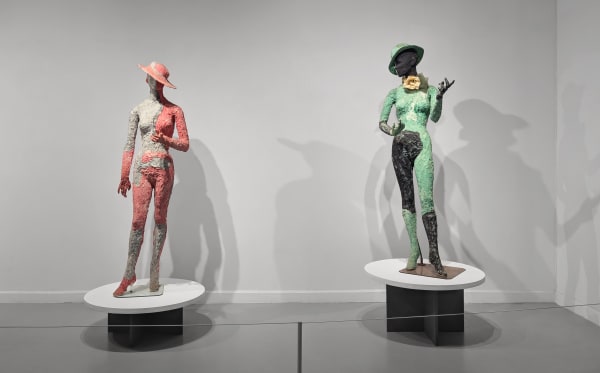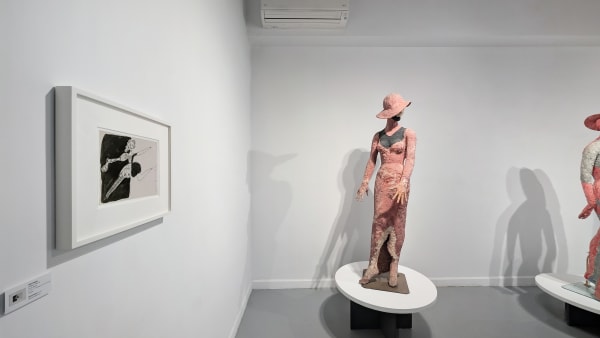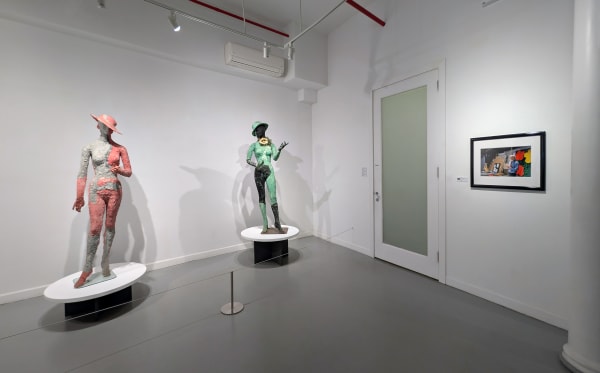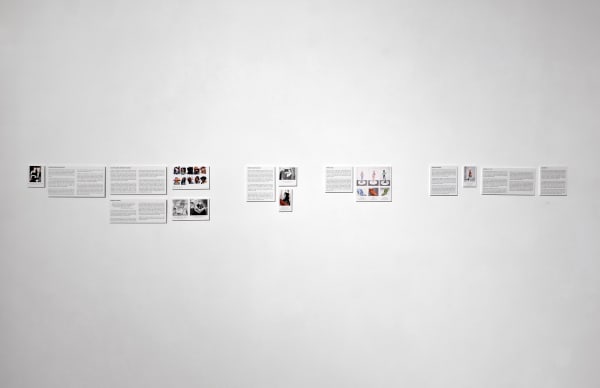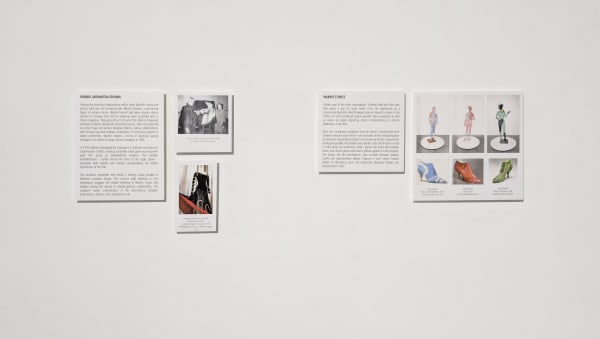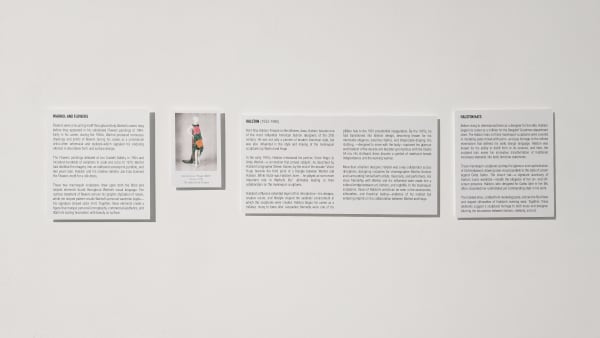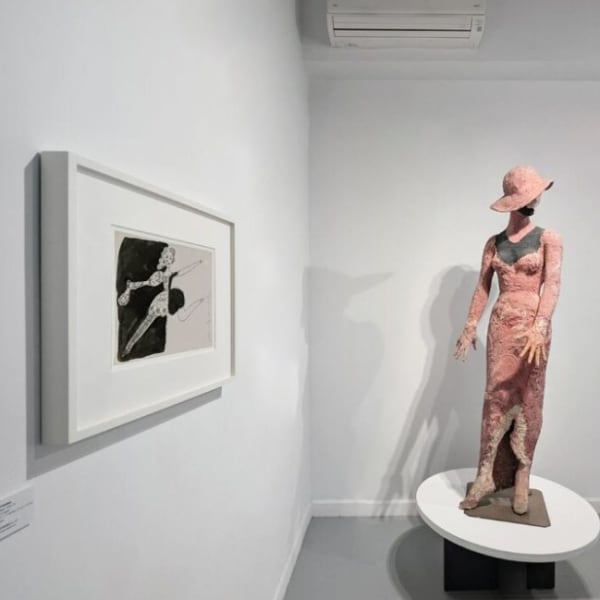Westwood Gallery NYC presents the unveiling of nine mannequin sculptures—the secret, long-lost collaboration between Andy Warhol and Victor Hugo (Rojas), one of the most controversial figures in the artist’s inner circle. Created circa 1978-1980, these mysterious sculptures were meant for an event that never materialized. Now, after four decades of obscurity, these extraordinary works emerge from the shadows to take their place in art history.
-
 The Secret Sculptures of Andy Warhol & Victor Hugo: An Investigative Journey | Installation View
The Secret Sculptures of Andy Warhol & Victor Hugo: An Investigative Journey | Installation View -
 The Secret Sculptures of Andy Warhol & Victor Hugo: An Investigative Journey | Installation View
The Secret Sculptures of Andy Warhol & Victor Hugo: An Investigative Journey | Installation View -
 The Secret Sculptures of Andy Warhol & Victor Hugo: An Investigative Journey | Installation View
The Secret Sculptures of Andy Warhol & Victor Hugo: An Investigative Journey | Installation View -
 The Secret Sculptures of Andy Warhol & Victor Hugo: An Investigative Journey | Installation View
The Secret Sculptures of Andy Warhol & Victor Hugo: An Investigative Journey | Installation View -
 The Secret Sculptures of Andy Warhol & Victor Hugo: An Investigative Journey | Installation View
The Secret Sculptures of Andy Warhol & Victor Hugo: An Investigative Journey | Installation View -
 The Secret Sculptures of Andy Warhol & Victor Hugo: An Investigative Journey | Installation View
The Secret Sculptures of Andy Warhol & Victor Hugo: An Investigative Journey | Installation View -
 The Secret Sculptures of Andy Warhol & Victor Hugo: An Investigative Journey | Installation View
The Secret Sculptures of Andy Warhol & Victor Hugo: An Investigative Journey | Installation View -
 The Secret Sculptures of Andy Warhol & Victor Hugo: An Investigative Journey | Installation View
The Secret Sculptures of Andy Warhol & Victor Hugo: An Investigative Journey | Installation View -
 The Secret Sculptures of Andy Warhol & Victor Hugo: An Investigative Journey | Installation View
The Secret Sculptures of Andy Warhol & Victor Hugo: An Investigative Journey | Installation View -
 The Secret Sculptures of Andy Warhol & Victor Hugo: An Investigative Journey | Installation View
The Secret Sculptures of Andy Warhol & Victor Hugo: An Investigative Journey | Installation View -
 The Secret Sculptures of Andy Warhol & Victor Hugo: An Investigative Journey | Installation View
The Secret Sculptures of Andy Warhol & Victor Hugo: An Investigative Journey | Installation View -
 The Secret Sculptures of Andy Warhol & Victor Hugo: An Investigative Journey | Installation View
The Secret Sculptures of Andy Warhol & Victor Hugo: An Investigative Journey | Installation View -
 The Secret Sculptures of Andy Warhol & Victor Hugo: An Investigative Journey | Installation View
The Secret Sculptures of Andy Warhol & Victor Hugo: An Investigative Journey | Installation View -
 The Secret Sculptures of Andy Warhol & Victor Hugo: An Investigative Journey | Installation View
The Secret Sculptures of Andy Warhol & Victor Hugo: An Investigative Journey | Installation View -

The Secret Sculptures of Andy Warhol & Victor Hugo: An Investigative Journey | Installation View
-
 The Secret Sculptures of Andy Warhol & Victor Hugo: An Investigative Journey | Installation View
The Secret Sculptures of Andy Warhol & Victor Hugo: An Investigative Journey | Installation View -
 The Secret Sculptures of Andy Warhol & Victor Hugo: An Investigative Journey | Installation View
The Secret Sculptures of Andy Warhol & Victor Hugo: An Investigative Journey | Installation View -
 The Secret Sculptures of Andy Warhol & Victor Hugo: An Investigative Journey | Installation View
The Secret Sculptures of Andy Warhol & Victor Hugo: An Investigative Journey | Installation View -
 The Secret Sculptures of Andy Warhol & Victor Hugo: An Investigative Journey | Installation View
The Secret Sculptures of Andy Warhol & Victor Hugo: An Investigative Journey | Installation View -
 The Secret Sculptures of Andy Warhol & Victor Hugo: An Investigative Journey | Installation View
The Secret Sculptures of Andy Warhol & Victor Hugo: An Investigative Journey | Installation View -
 The Secret Sculptures of Andy Warhol & Victor Hugo: An Investigative Journey | Installation View
The Secret Sculptures of Andy Warhol & Victor Hugo: An Investigative Journey | Installation View -
 The Secret Sculptures of Andy Warhol & Victor Hugo: An Investigative Journey | Installation View
The Secret Sculptures of Andy Warhol & Victor Hugo: An Investigative Journey | Installation View -
 The Secret Sculptures of Andy Warhol & Victor Hugo: An Investigative Journey | Installation View
The Secret Sculptures of Andy Warhol & Victor Hugo: An Investigative Journey | Installation View -
 The Secret Sculptures of Andy Warhol & Victor Hugo: An Investigative Journey | Installation View
The Secret Sculptures of Andy Warhol & Victor Hugo: An Investigative Journey | Installation View -
 The Secret Sculptures of Andy Warhol & Victor Hugo: An Investigative Journey | Installation View
The Secret Sculptures of Andy Warhol & Victor Hugo: An Investigative Journey | Installation View -
 The Secret Sculptures of Andy Warhol & Victor Hugo: An Investigative Journey | Installation View
The Secret Sculptures of Andy Warhol & Victor Hugo: An Investigative Journey | Installation View -
 The Secret Sculptures of Andy Warhol & Victor Hugo: An Investigative Journey | Installation View
The Secret Sculptures of Andy Warhol & Victor Hugo: An Investigative Journey | Installation View -
 The Secret Sculptures of Andy Warhol & Victor Hugo: An Investigative Journey | Installation View
The Secret Sculptures of Andy Warhol & Victor Hugo: An Investigative Journey | Installation View -
 The Secret Sculptures of Andy Warhol & Victor Hugo: An Investigative Journey | Installation View
The Secret Sculptures of Andy Warhol & Victor Hugo: An Investigative Journey | Installation View -
 The Secret Sculptures of Andy Warhol & Victor Hugo: An Investigative Journey | Installation View
The Secret Sculptures of Andy Warhol & Victor Hugo: An Investigative Journey | Installation View -
 The Secret Sculptures of Andy Warhol & Victor Hugo: An Investigative Journey | Installation View
The Secret Sculptures of Andy Warhol & Victor Hugo: An Investigative Journey | Installation View -
 The Secret Sculptures of Andy Warhol & Victor Hugo: An Investigative Journey | Installation View
The Secret Sculptures of Andy Warhol & Victor Hugo: An Investigative Journey | Installation View
Westwood Gallery NYC presents the unveiling of nine mannequin sculptures—the secret, long-lost collaboration between Andy Warhol and Victor Hugo (Rojas), one of the most controversial figures in the artist’s inner circle. Created circa 1978-1980, these mysterious sculptures were meant for an event that never materialized. Now, after four decades of obscurity, these extraordinary works emerge from the shadows to take their place in art history.
A Triad That Defined an Era: Warhol, Hugo, & Halston
More than just a rediscovered body of work, this exhibition reveals an unseen chapter in the intertwined legacies of Warhol, Halston, and Victor Hugo, the Venezuelan-born window display designer-turned-provocateur. Hugo met iconic American fashion designer Halston in 1972, soon becoming romantic partners and collaborators. Halston introduced Hugo to his circle, including Andy Warhol, creating a volatile, electric trio that blurred the boundaries between art, fashion, and spectacle.
From Manhattan’s Studio 54 to Montauk’s beachside estate, Hugo, Warhol, and Halston’s collaborations were the lifeblood of the era’s decadent creative explosion. While Warhol and Halston formally collaborated on designs, Hugo’s radical window displays—featuring everything from staged vignettes of birthing mannequins to Patty Hearst’s trial. Hugo transformed Halston’s Madison Avenue windows into a theater stage for performance art and social critique; Warhol called it ‘theater in the street.’ This exhibition uncovers how Hugo and Warhol’s artistic partnership extended beyond the canvas and into sculpture — a medium Warhol was eager to explore.
The Lost Mannequin Sculptures: Pop Art Meets Androgynous Avant-Garde
Each of the nine mannequin sculptures is a relic of Warhol’s Pop universe appearing as unearthed figures from a queer, surrealist Pompeii. The designs incorporate signature motifs:
- A mannequin in a textured, dusty-rose long dress—a nod to Halston’s iconic silhouettes
- Three figures adorned with Halston hats, a tribute to the designer’s early career as a milliner
- Serpentine patterns reminiscent of Halston’s costume designs for Martha Graham’s ballet productions
- Two figures prominently feature Warhol’s flower imagery, linking the sculptures to his famed 1950s and 60s floral works
These sculptures are neither strictly fashion nor purely fine art, but rather an avant-garde hybrid, reflecting Warholian pop culture and Hugo’s rebellious aesthetic. Unlike Warhol’s explicit ‘Sex Parts and Torsos’ series, the mannequins embrace an androgynous sensuality, challenging gender norms while immersing viewers in a world where Pop Art meets performance art.
A Mystery That Spanned Decades, Warhol to Westwood
The original purpose of these sculptures remains an enigma. According to Warhol’s confidant Stuart Pivar, Warhol had been eager to explore sculpture as a new medium experimenting with ‘living mask’ sculptures which culminated in the casting of Pivar’s face in plaster several years before Warhol’s death. Some speculate these mannequins were Warhol’s way of keeping Hugo creatively occupied and perhaps even stoking jealousy in Halston as their relationship grew strained. Others believe the project was meant for a grand Warholian spectacle that never came to fruition.
What is certain is that these sculptures passed through only two private collectors before arriving at Westwood Gallery NYC. Esther Carroll, an antique dealer with close ties to Warhol, first acquired them in the mid-1980s. They later passed to George Holmes, an art historian and former antiques dealer, who exhibited them in 2007 before partnering in ownership with curator James Cavello to embark on 15 years of research.
Westwood Gallery’s Archival Breakthrough
In 2008, two of the sculptures were submitted to the Andy Warhol Art Authentication Board, which attributed them to another artist due to lack of information at the time. The review took place before extensive research unveiled the deeper Warhol-Hugo connection. Now, on the occasion of Westwood Gallery NYC’s 30th anniversary, these works are being presented in their full historical and artistic context. While the mannequins are not for sale, this exhibition presents ongoing research into the origins of these sculptures and invites the public to contribute any additional insights, memories, or firsthand accounts related to their history.
